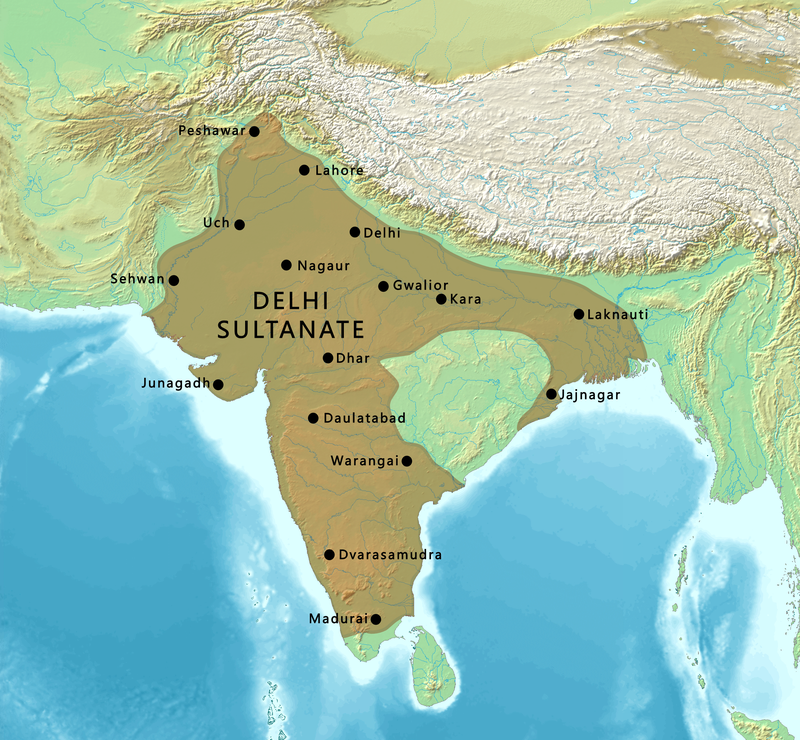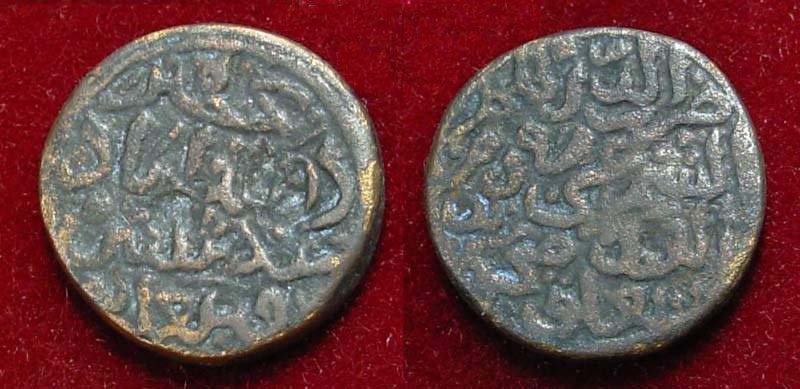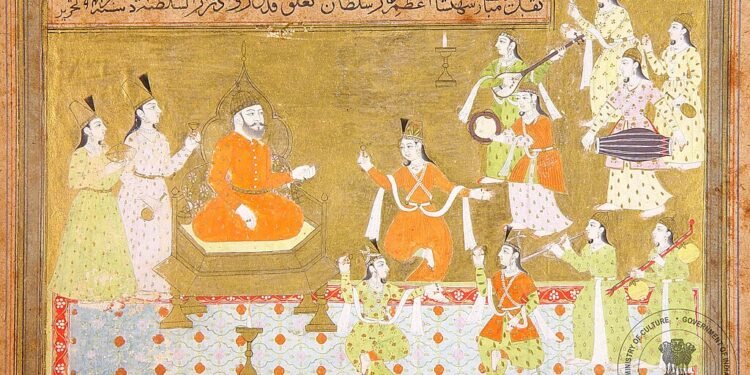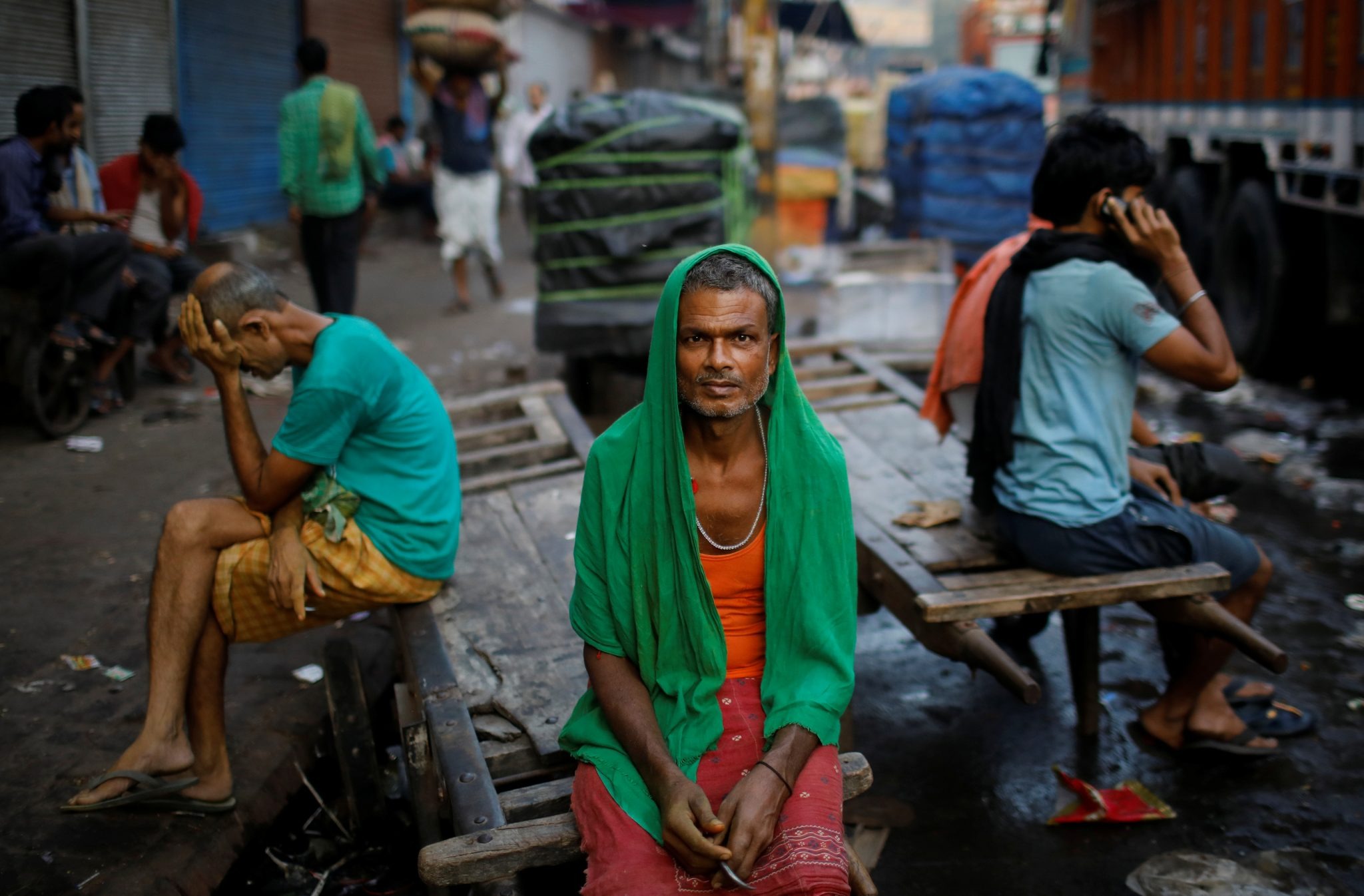Introduction
Muhammad bin Tughluq (r. 1325–1351 CE) inherited the Delhi Sultanate at its widest expanse and attempted to convert a cavalry‑conquest state into a centrally steered, cash‑taxed, pan‑subcontinental polity through bold but overextended experiments in revenue, currency, military logistics, and capital geography. Vision met volatility: sweeping fiscal hikes on measured land, token copper currency alongside silver tankas, a Deccan‑facing capital shift to Daulatabad, and long‑range expeditions toward Khorasan/Transoxiana and the deep Deccan strained treasuries, fractured provincial loyalties, and accelerated centripetal breakaways even as his administrative intelligence, road‑relay system, and audit instincts remained ahead of their time.

Political context and accession
When Muhammad bin Tughluq (Prince Jauna Khan) succeeded his father Ghiyas‑ud‑Din Tughluq in 1325, Delhi’s authority stretched from Punjab and Sindh across the doab to Bengal in the east and deep into the Deccan where tributary submission had been extracted during Khalji‑Tughluq drives. The inheritance was impressive yet brittle: revenue networks were uneven, Deccan elites were only recently subdued, and frontier governors wielded substantial coercive capital. The new Sultan’s project was to bind this space with uniform revenue, currency standardization, and strategic reorientation toward both the Deccan corridors and prospective western campaigns.
Fiscal overhaul: measurement, assessment, and audit
Central to Muhammad’s vision was replacing loosely assessed shares with measured, recorded, and monetized agrarian revenue across the fertile doab. The state extended land measurement (survey) and demanded higher cash assessments pegged to optimistic harvest assumptions. In theory, this modernized extraction and stabilized cash flows for a standing army; in practice, monsoon variability, price shocks, and inadequate remissions produced peasant distress and flight. The Sultan did attempt relief (remissions, seed grain, loans), but the damage to rural confidence and the cost of coercive collection seeded rebellion in the doab and beyond. Still, the insistence on measurement, registers, and audits foreshadowed later, more successful systems.
Currency experiment: token copper and the tanka
To relieve silver scarcity and lubricate state payments, Muhammad introduced fiduciary token currency—copper and brass coins declared equal in value to silver tankas when issued by the diwan. In a premodern economy lacking anti‑counterfeit tech and strict mint control, unauthorized mints and counterfeiters multiplied. Market actors discounted copper or refused it, tax‑paying in debased coins while hoarding silver, and price distortions cascaded. The Sultan ultimately rescinded the measure, promising to redeem token coins for silver—an expensive reversal that drained the treasury and weakened confidence. The episode remains a classic case of fiat without enforcement capacity.
Capital shift: Delhi to Daulatabad (and back)
Strategically, Muhammad sought to reduce Delhi’s exposure to northern shocks and pivot toward the wealth and lines of the Deccan by transferring the capital to Daulatabad (c. 1327–1328). The plan had logic—centralizing authority closer to peninsular corridors and projecting sovereignty more evenly across the map. But the scale and speed of relocation were disruptive: administrators, scholars, and service groups were compelled southward, disrupting northern governance; logistics for dual capitals proved costly; and after resistance and practical difficulties, the court partially re‑migrated. The policy left political scars in both regions and fostered a perception of fickleness that magnified opposition.
Military grand strategy: west and south
Western ambitions: The Sultan raised a massive force and contemplated campaigns into Khorasan/Transoxiana, anticipating opportunity amid Mongol‑Ilkhanid flux. Preparing for a theater beyond the Hindu Kush strained finances and diverted attention without yielding decisive gains, as conditions shifted and the expedition stalled in planning and forward logistics.
Deccan entanglements: In the south, attempts to tighten control over tributary polities led to recurrent expeditions. The eventual revolt of amirs and soldiers in the Deccan, and the rise of an independent Bahmani Sultanate (1347), underscored the hazards of coercive centralization over vast distances amid high campaign costs. Elsewhere, provinces such as Bengal periodically asserted autonomy, sensing Delhi’s bandwidth limits.
Administration, roads, and intelligence
Despite the turbulence, Muhammad strengthened features of governance with lasting value. He extended a relay network with rest houses, wells, and ferries that improved travel and intelligence flow; he demanded meticulous record‑keeping from revenue to military rolls; and he cultivated a reputation for personal presence on tours of inspection. His court drew scholars and jurists, and he engaged in reasoned disputation, reflecting a learned temperament often attested in sources. Yet the very speed of his initiatives, combined with harsh punitive responses when resisted, alienated support from elites and cultivators alike.
Rebellions, fragmentation, and resilience
By the 1330s–1340s, stress points multiplied: doab uprisings against revenue demands; elites in the Deccan coalescing into durable opposition; and eastern satraps exploiting fiscal and military distractions to reassert regional control. The Sultan’s energy—rapid marches, punitive strikes, and policy reversals when necessary—contained some fires but could not prevent systemic fragmentation. The emergence of the Bahmani Sultanate and the reassertion of regional houses in the south marked a pivot to a multi‑polity subcontinent. Nevertheless, the Delhi core and northern urban lattice endured, and certain administrative habits—survey, audit, road‑relay—remained in institutional memory.
Reputation: visionary reformer or erratic autocrat?
Later chroniclers painted Muhammad bin Tughluq as brilliant yet impulsive. Both readings capture facets of a ruler who grasped the need for measured revenue, standardized currency, strategic relocation, and long‑range logistics—but who overestimated the state’s enforcement capacity and the social bandwidth for rapid change. Where capacity matched ambition (record‑keeping, routes, inspections), his initiatives endured; where enforcement lagged (token coinage, steep cash assessments, mass relocation), failure was amplified by the scale of the experiment.
High‑yield anchors
Dates and identity: Muhammad bin Tughluq (Prince Jauna Khan), r. 1325–1351; successor to Ghiyas‑ud‑Din Tughluq; Tughluq dynasty.
Signature policies: Doab land measurement and higher cash assessment; token copper/brass currency alongside silver tankas; capital shift to Daulatabad; large western expeditionary preparations; repeated Deccan campaigns.
Outcomes: Fiscal distress and rural flight; currency chaos and costly redemption; partial reversal of capital move; provincial rebellions; formation of the Bahmani Sultanate; Delhi core persists with administrative learnings.
Institutional residues: Emphasis on registers, audits, and intelligence; road‑relay and way stations; personal inspections and a learned, disputatious court culture.
Why his reign matters
Muhammad bin Tughluq forced the Delhi Sultanate to confront the structural limits of a cavalry empire ruling a monsoon‑agriculture subcontinent. His failed experiments became templates for later, more calibrated reforms: rigorous survey and assessment would succeed under different incentives; currency innovation would await stronger mint control; capital pluralism would return as regional capitals under successor polities; and Deccan engagement would proceed through negotiated suzerainty rather than sustained occupation. His reign, therefore, is a pivotal lesson in the gap between strategic insight and administrative capacity—and in the costs of trying to close it too quickly.

Conclusion
Ambition defined Muhammad bin Tughluq’s project: a measured, monetized, strategically reoriented empire capable of campaigning across continents while governing across ecologies. Capacity, however, lagged intent. Token coinage, steep cash revenue, and an abrupt capital transplant destabilized the very base needed to fund those designs, catalyzing provincial autonomy even as Delhi’s core persisted. The mixed legacy is enduring: a cautionary tale about pace and enforcement, and a bequest of administrative habits and strategic horizons that later states would adapt with greater success.




